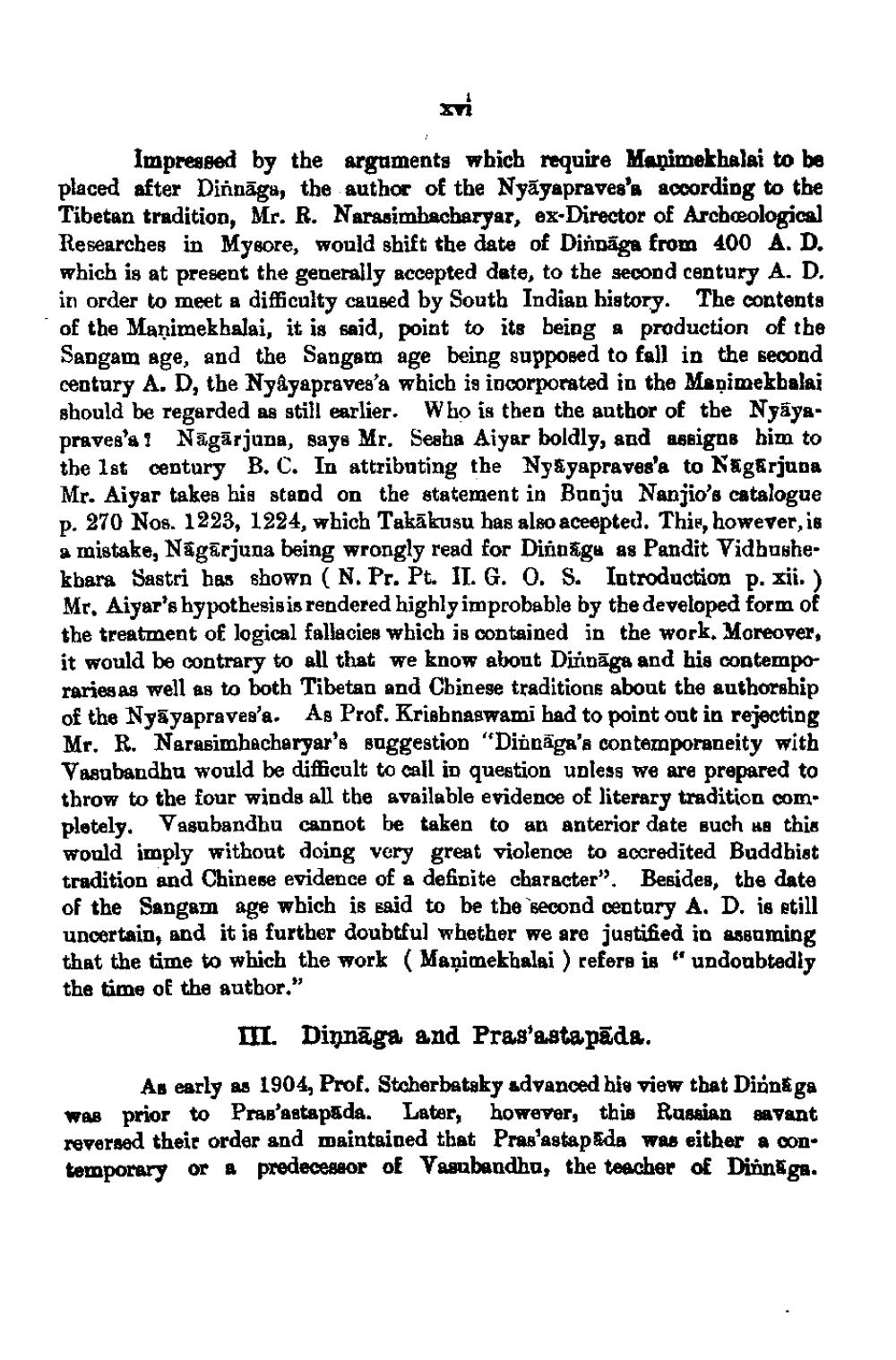________________
Impressed by the arguments which require Manimekhalai to be placed after Dinnāga, the author of the Nyāyapraves's according to the Tibetan tradition, Mr. R. Narasimhacharyar, ex-Director of Archeological Researches in Mysore, would shift the date of Dindäga from 400 A. D. which is at present the generally accepted date, to the second century A. D. in order to meet a difficulty caused by South Indian history. The contenta of the Manimekhalai, it is said, point to its being a production of the Sangam age, and the Sangam age being supposed to fall in the second century A. D, the Nyâyapraves'a which is incorporated in the Mepimekbalai should be regarded as still earlier. Who is then the author of the Nyayapraves's: Nāgārjupa, says Mr. Sesha Aiyar boldly, aad assigns him to the 1st century B. C. In attributing the Ny&yapraves'a to Nagarjupa Mr. Aiyar takes his stand on the statement in Banju Nanjio's catalogue p. 270 Nos. 1223, 1224, which Takākusu has also aceepted. Thie, however, is a mistake, Nāgārjuna being wrongly read for Dianggu as Pandit Vidbushekbara Sastri has shown ( N. Pr. Pt. II. G. O. S. Iotroduction p. xii.) Mr, Aiyar's hypothesis is rendered highly improbable by the developed form of the treatment of logical fallacies which is contained in the work. Moreover, it would be contrary to all that we know about Dinnāga and his contempo raries as well as to both Tibetan and Chinese traditione about the authorship of the Nyāyapravea'a. As Prof. Krisbnaswami had to point out in rejecting Mr. R. Narasimhacharyar's suggestion "Diināga's contemporaneity with Vasubandhu would be difficult to call in question unless we are prepared to throw to the four winds all the available evidence of literary tradition completely. Vagabandhu cannot be taken to an anterior date such ke this
mlá imply without doing very great violence to accredited Buddhist tradition and Chinese evidence of a definite character". Besides, the date of the Sangam age which is said to be the second centary A. D. is still uncertain, and it is further doubtful whether we are justified in asgaming that the time to which the work (Manimekhalai ) refors is " undoubtedly the time of the author."
III. Dinnāga and Pras'asta pāda. As early as 1904, Prof. Stcherbataky advanced hio view that Dinna ga WAS prior to Prag'astapada. Later, however, this Russian savant raversed their order and maintained that Pras'astapada was either a contemporary or 4 predecessor of Vasubandhu, the teacher of Dirndga.




